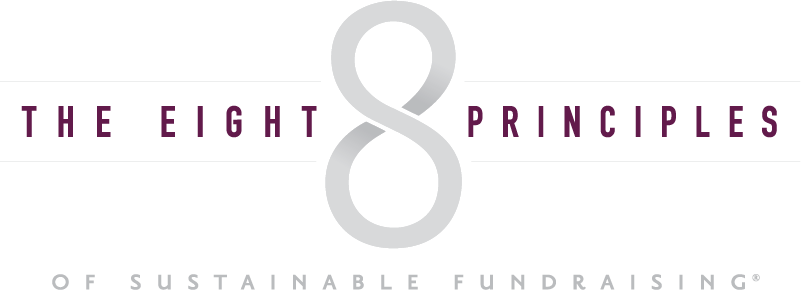
By: Heather Yandow, Third Space Studio
When I first read The Eight Principles of Sustainable Fundraising®, I thought, “Yep, these are right on!” In my 15 years of working with mostly small organizations to strengthen their fundraising, I’ve seen these principles in action. And I’ve observed that those organizations that follow the principles have greater success in building a sustainable base of donors.
But in addition to my experience, there’s now hard data to support The Eight Principles: the Individual Donor Benchmark Report. This research, now in it’s fifth year, looks at the fundraising results for small and mighty organizations – those with revenues under $2 million.
The 2015 Report uncovered some interesting findings about a number of topics including the average gift, percentage of revenue raised online, and board member involvement in fundraising. But the data also supports Principle 7 – Renew & Refresh™ and Principle 8 – Invest, Integrate, & Evaluate™ to enhance individual fundraising efforts.
Retention, Retention, Retention: Renew & Refresh™
One of the most important data points for individual donor fundraising is your organization’s retention rate: the percentage of last year’s donors who give again this year. The principle of Renew & Refresh™ speaks to the critical nature of retention rate in sustainable fundraising. If you know your retention rate, you can judge the success of your donor engagement work, project future fundraising growth, and create effective goals for new donor recruitment.
In this year’s study, I found that the retention rate is about 60%. This means you can expect that 6 out of 10 donors who gave last year will give again this year. While many of the data points change with size of organization, number of donors, or presence of a membership program – donor retention stayed at 60% across a number of categories.
Although there may be room to increase retention rates, many organizations will need to focus on finding new contacts and developing strategies to convert them to donors. Think through how you are opening the door to new potential donors, whether through community events, your website, staff contact, or other avenues. You should also carefully consider how you are engaging them in your work, and, of course, how you are asking these potential first-time donors to give.
The challenge is that if you are successful at growing your donor base, you’ll need to find more and more new donors every year to keep up with donor loss. The best way to ensure that your organization is prepared? Involve everyone – board, staff, and volunteers to identify, cultivate, and ask for support.
It’s the Plan, Man: Invest, Integrate, & Evaluate™
The secret to fundraising success is not a secret at all. If you want to raise money from individuals, you need a fundraising plan. Organizations that have a fundraising plan reported raising one-third more money from individuals, having almost twice as many donors, and garnering significantly larger average gifts.
In addition, we found that if you have a plan and you invest more time or money in fundraising, it will generate more revenue. This is true for paying your fundraiser more, hiring additional staff, or engaging your board members. In fact, for every additional board member that plays a significant role in fundraising, organizations raised an additional $11,686 in individual donor revenue.
These findings support the importance of Invest, Integrate, & Evaluate™. Creating a fundraising plan will be an effective tactic for ensuring that you are strategic about your investments of time and money.
The term ‘fundraising plan’ can be ambiguous, so my research dug in a little more to what that means. A majority of organizations include a list of overall fundraising strategies and goals, as well as a calendar of activities. About half of organizations include a more detailed breakdown of their activities, and half include an assessment of previous years fundraising results.
Whatever format your plan takes, the three most critical pieces are:
- Reflection on past performance. Use questions like: How did you do last year? Where do you succeed? Why? Where did you stumble? Why? What does this tell you about what this year’s work should be?
- Your big picture goals for the year – beyond just dollars raised. You may want to include goals for new donors, donor visits, or your monthly giving program. Also consider including goals for board involvement and goals around strengthening your fundraising infrastructure. (database, payment processing, thank you notes, etc.)
- An outline of the year. Mapping out your goals to a calendar, whether by weeks, months, or even quarters, will help ground-truth your plans, and can keep you on track when other activities begin to crowd your calendar.
Now Dive into More Data…
This year’s Report also found a number of important fundraising benchmarks including:
· Half of individual donor revenue comes from donors giving less than $1,000.
· 4 out of 10 board members are active in fundraising in any significant way.
· 3 out of 8 donors are giving online and one in ten donors make a recurring gift.
· Organizations are raising one in five dollars through online giving.
For more details and data breakdowns, the full report and infographic are available HERE.

Heather Yandow brings more than a decade of experience as an outreach coordinator, coalition leader, project manager, and fundraiser to Third Space Studio and our clients. Heather’s nonprofit experience includes being a staff member, volunteer, and Board member. Her most recent staff position was as the director of development and communications for the NC Conservation Network. Heather has served on the Board of Directors of the beehive collective (a giving circle in Raleigh), Democracy NC, and NCYT: NC’s Network of Young Nonprofit Professionals. Heather earned a Bachelor’s of Science in Mathematics from UNC, and holds a Certificate in Nonprofit Management from Duke University.


